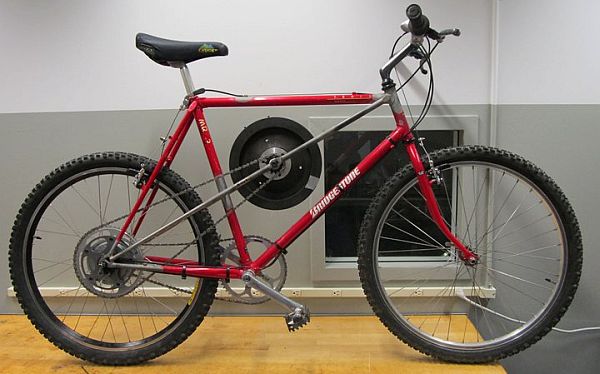
A flywheel bicycle invented by a final year student of The Cooper Union for the Advancement of Science and Art, New York, has been awarded Nicholas Stefano Prize by the school for an outstanding mechanical engineering senior project. The Cooper Union for the Advancement of Science and Art, New York, has been following an annual tradition for over a century now. Each year, its final year students (popularly referred to as The Cooper Union) showcase their school projects at the institute’s annual event. These projects belong to varied fields such as art, technology, engineering, architecture, and power.
This year’s recently concluded annual event showcased over 300 projects including unique inventions conceptualized and executed completely by talented students from the institute. The designs demonstrated the students’ understanding of society’s future requirements from technology and gadgets. A mobile mini robot, a wave energy converter, and a bicycle with a flywheel were some of the noteworthy inventions among the ones showcased at the event.
The flywheel bicycle invented by Maxwell Von Stein was awarded the Nicholas Stefano Prize by the school for an outstanding mechanical engineering senior project. The ingenuity of this bike lies in its ability to use a spinning flywheel to reclaim the energy lost when the cyclist brakes and use it later to increase the bike’s speed.
Von Stein explains the bike’s mechanism, “When a rider wishes to reduce cycling speed, the flywheel is capable of temporarily storing the kinetic energy released. This energy can later be used by the cyclist to resume increased speed levels. Thus, the mechanism facilitates a cyclist to recover the loss of speed that takes place during braking.” This bike with flywheel is efficient in energy usage and it makes cycling more fun for the rider by allowing him to boost speed when desired.
The flywheel used in this invention of Von Stein weighs 6.8 kilogram and comes from an automobile engine. It is mounted on the frame of the bicycle. The energy generated from the constant variable transmission in the rear wheel powers the flywheel. When the bike is charging, the transmission shifts to increase the ratio of flywheel speed in comparison to bike speed. On the contrary, when the bike boosts the ratio of flywheel speed lowers in comparison to bike speed. The rider can use this transmission shift to his advantage. For example, the flywheel can be charged by the rider while slowing or during descent of a hill. The energy stored in the flywheel during descent can be released by the rider during ascent of hill to boost the bike’s speed. In situations where average speed of the bike is around 20-24 km per hour, the flywheel helps increase maximum acceleration and leads to pedal energy savings of almost 10 percent.
Via: SciAm




